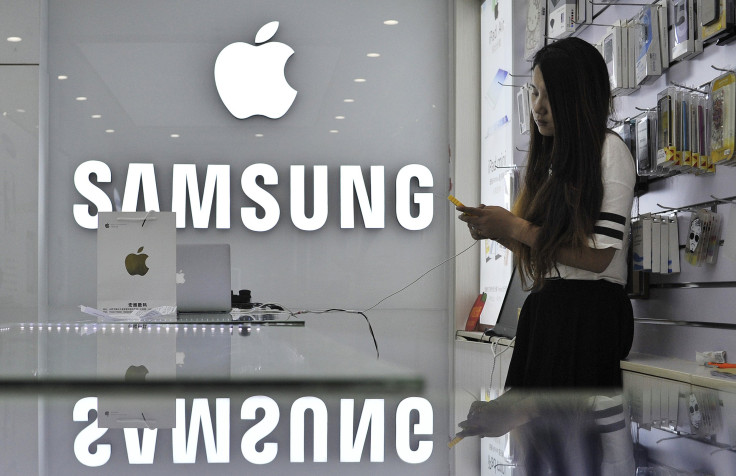iPhone 6 Plus vs. Galaxy Note 4: Has Apple Really Snatched Away The Phablet Market From Samsung?

If Samsung Electronics Co. perfected the phablet, Apple Inc. is taking it to another level. But four years after Samsung popularized the big-screen smartphone with the Galaxy Note, how long can Samsung continue to dominate the market it created?
In the two months since Apple Inc. introduced the iPhone 6 Plus, Apple fans have been flocking to the phablet world, expanding it significantly. Research from Kantar World Panel says the iPhone 6 Plus now makes up 41 percent of the U.S. phablet market share based on a survey of people who've purchased an iPhone 6 Plus since mid-September.
But relatively few of those iPhone 6 Plus buyers were switching from Android. According to the survey, just 9 percent of iPhone 6 and iPhone 6 Plus buyers switched from Android, while 85 percent of new iPhone buyers upgraded from an older iPhone, meaning the new larger devices are mostly attracting consumers who were already Apple fans.
“This is a question that comes up with every new category. What happens when a vendor that starts with 100 percent share in that category – a market of one? [Have they] lost their edge? Have they lost their ability to innovate?” said ABI analyst Jeff Orr. “No. I think that’s a mark of success to see any vendor give up market share because it’s a validation by other vendors that are forming an ecosystem around that solution.”
As of the third quarter, Samsung was the largest phablet manufacturer with 22 percent of the global market, while Apple was fifth, behind LG Electronics, Lenovo and ZTE, with just 5 percent of the global market, according to ABI Research. Samsung’s third-quarter phablet sales consisted of the Galaxy Note 3, Galaxy Note 3 Neo and Galaxy Mega handsets.
Apple launched the iPhone 6 Plus on Sept. 19, and Samsung dropped the Galaxy Note 4 globally on Oct. 10. So far, Apple has said it sold 10 million iPhone 6 and iPhone 6 Plus units in its first weekend. Korean publication News 1 claimed that the Galaxy Note 4 sold 4.5 million handsets during its first month, but there are no official sales figures for the phablet -- and Samsung hasn't provided any. “Gone are the days that Samsung makes bold declarations about its numbers,” said IDC analyst Ramon Llamas.
Samsung’s market outlook may seem bleak as its third-quarter earnings saw a 60 percent decline and its early-year flagship, the Galaxy S5, is now being considered a market failure that undersold its predecessor. But it is important to note that Samsung’s success in the phablet market does not rely soley on the Galaxy Note 4.
As the Galaxy Note 4 becomes more visible on the market, the Galaxy Note 3 will likely see a revival. Prices for the predecessor phablet are expected to drop throughout the quarter and will likely attract consumers who were on the fence about purchasing the Note 3 before due to its premium price tag.
Kantar’s research takes into account only about six weeks of U.S. iPhone 6 Plus sales, from the time it launched till the end of October. In comparison, the Galaxy Note 4 was not on the market for a considerable amount of that time period, and was definitely not available in the U.S. during most of the time this data was being collected. “The type of uptake we’re seeing from Apple iPhone 6 Plus at this point is definitely representative of a new product,” Orr said.
“If that panel were done mid-October to mid-November that would be an interesting number, because then you’d see a full month of Note 4 influence.”
Currently, the biggest competition for the iPhone 6 Plus is likely the iPhone 6. While the iPhone 6 Plus has done well among phablets, it is still trailing behind the iPhone 6 as well as older Apple smartphones like the iPhone 5s and iPhone 5c, according to Kantar’s figures.
“Obviously some of that (lower iPhone 6 Plus sales) is production and availability, but some of it is still the reflection -- that if you look at the overall phablet market share you are still talking about a very small part of the market,” said Kantar World Panel analyst Carolina Milanesi.
Phablets make up only 10 percent of the U.S. smartphone market, and even in larger markets like China, where phablets make up 19 percent of all smartphones, they are still in the minority. Many factors will affect the overall success of the iPhone 6 Plus on the global market -- equipment payment plans, for example. A primary indicator of sales from market to market will be whether or not that market offers subsidized phones, Milanesi noted. Since the iPhone 6 Plus is more expensive than the iPhone 6, the device should drive more sales in markets where consumers at least have the illusion of paying less money.
Samsung may not need to dominate the phablet market to succeed, as long as it keeps growing. “If the leading vendor who initially had close to all of the market to themselves sustain 20 percent to 30 percent share once it’s very rich with competitors and a lot of diversity -- that arguably should be seen as successful,” Orr said.
© Copyright IBTimes 2024. All rights reserved.






















